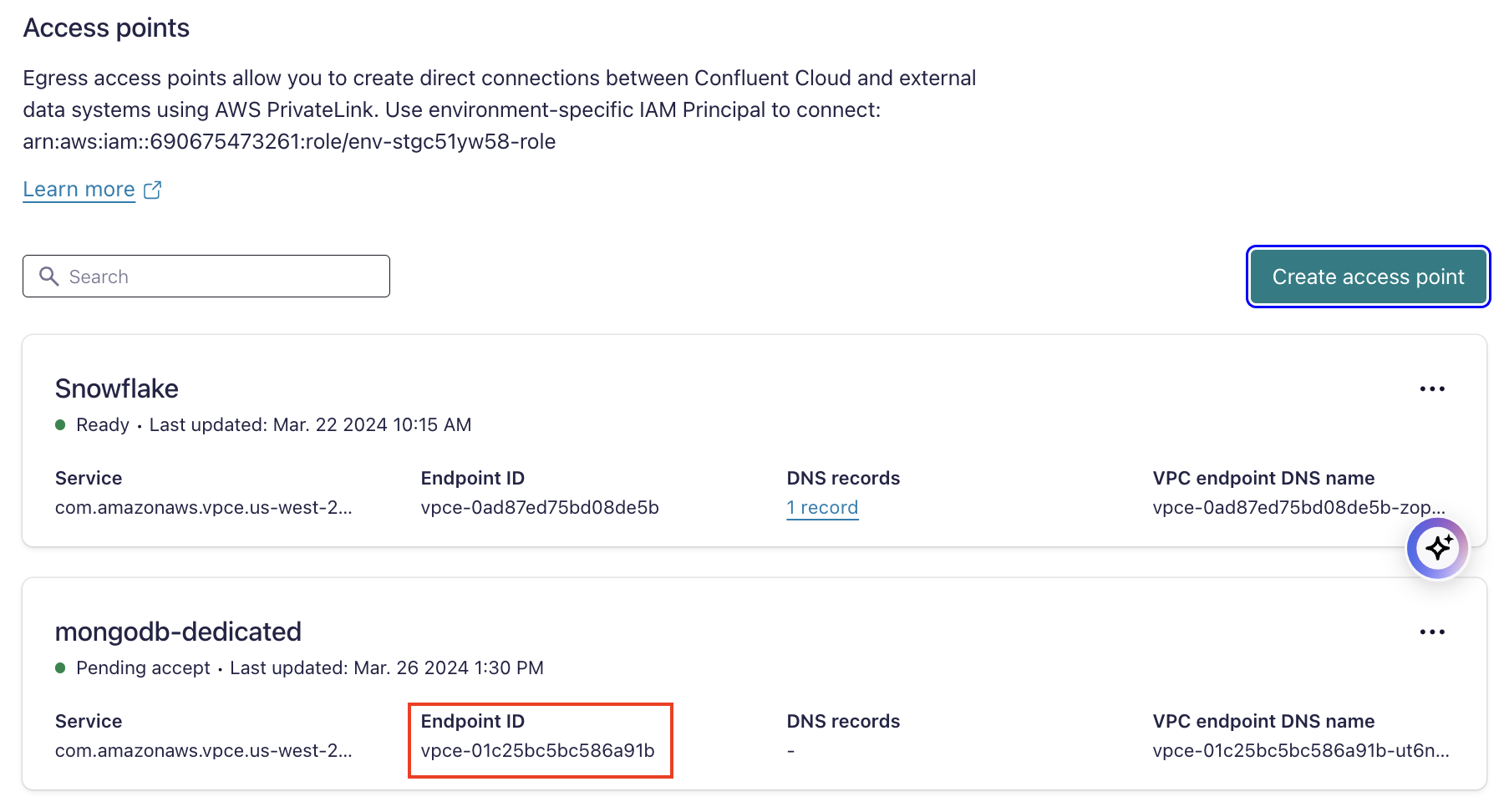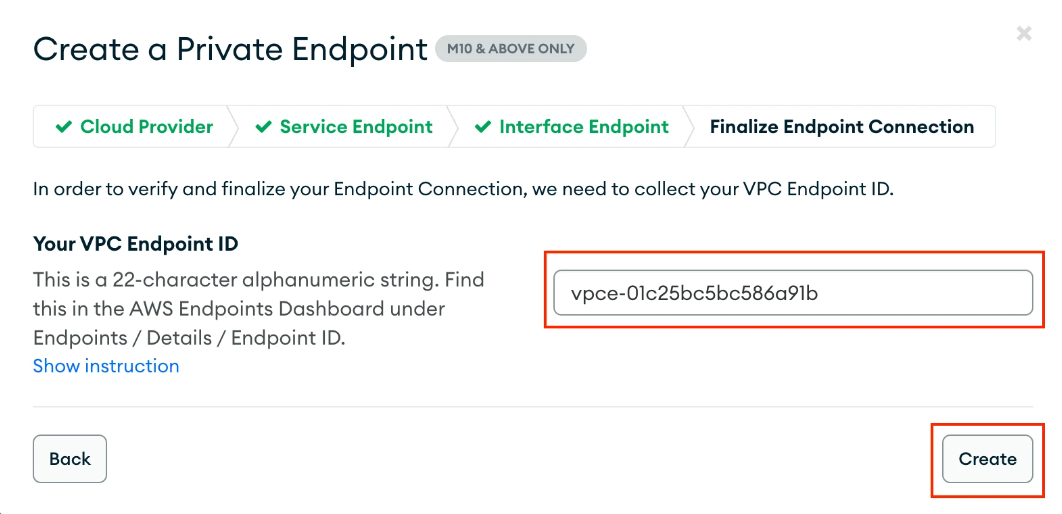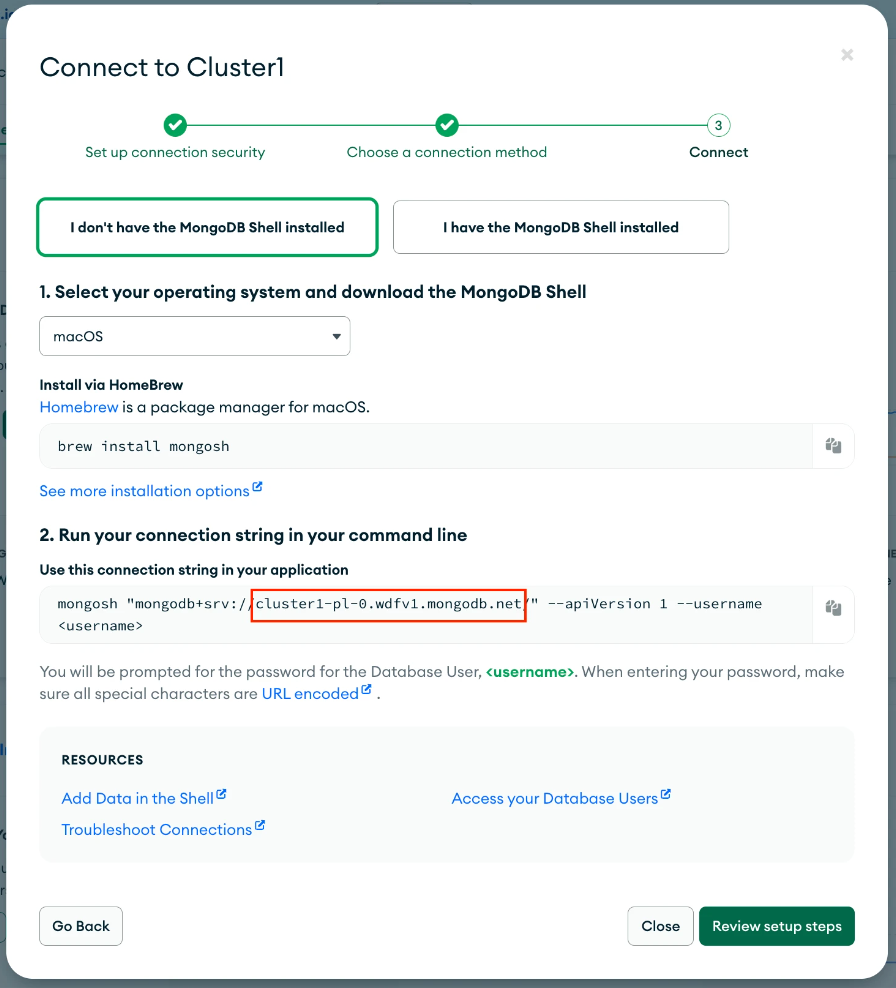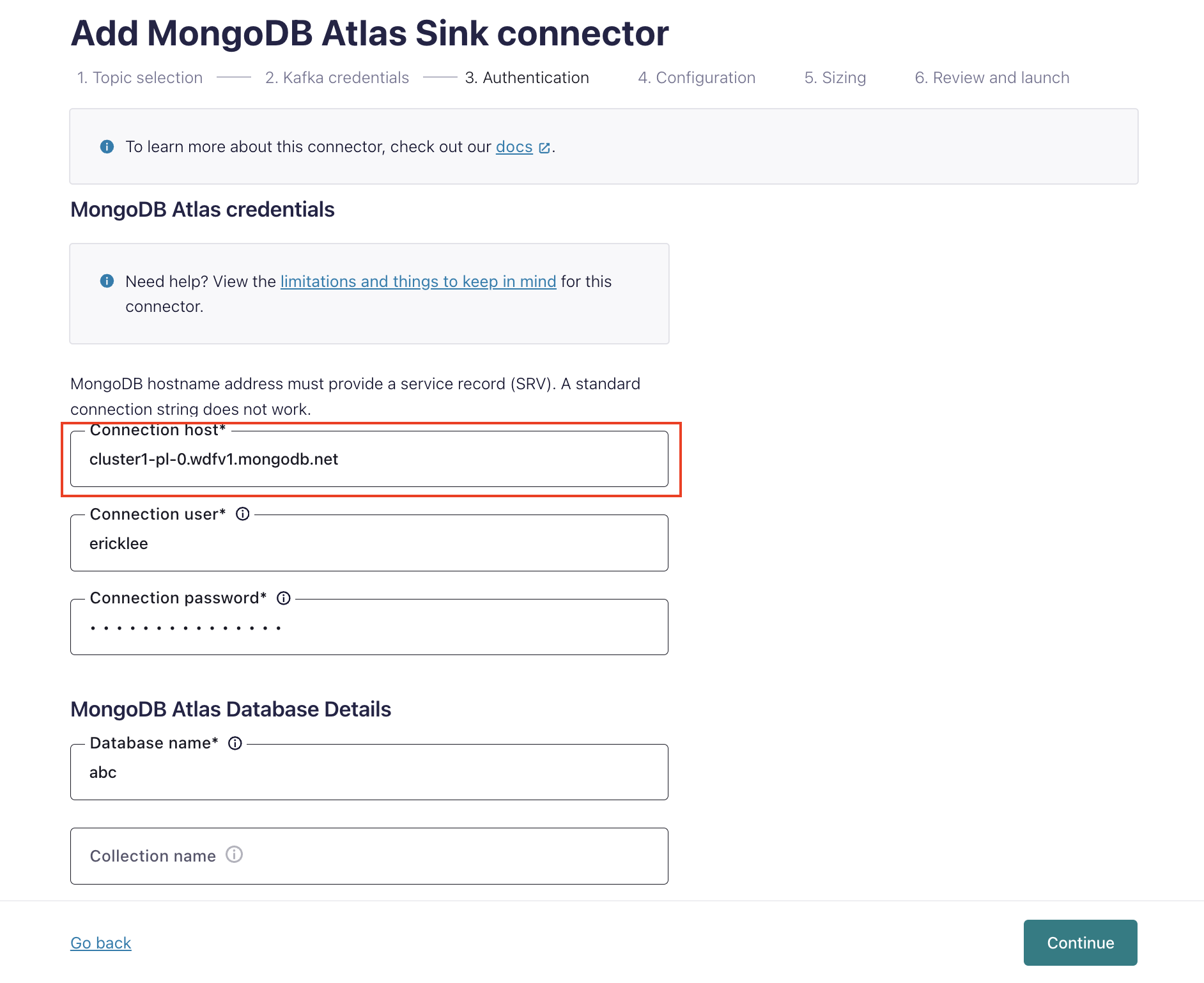Egress PrivateLink Endpoint Setup: MongoDB Atlas on AWS for Confluent Cloud
This topic presents the steps for configuring the MongoDB Atlas Source and Sink connectors in Confluent Cloud with AWS PrivateLink and Egress PrivateLink Endpoint.
Prerequisites
The following is a list of prerequisites for configuring the MongoDB Altas connector with an Egress PrivateLink Endpoint:
In Confluent Cloud, one of the following cluster types was set up with the specified network resource:
A Dedicated cluster with a Confluent Cloud network
For the steps to create a Confluent Cloud network, see Create a Confluent Cloud network. The Connection type of the network needs to be “PrivateLink Access”.
A Enterprise cluster with a network gateway
For the steps to create a gateway, see Create a gateway for outbound connectivity in Confluent Cloud.
A Dedicated MongoDB Atlas database was created to sink data into or to move data from, and it is running within the same region and cloud as the Confluent Cloud cluster.
A Kafka topic was created to either receive data from MongoDB Atlas (for the Source connector) or to send data to MongoDB Atlas (for the Sink connector).
Step 1. Create a MongoDB private endpoint
In MongoDB, create a private endpoint for your Dedicated MongoDB Atlas database:
Go to Network Access → Private Endpoint → Dedicated Cluster.
Click Add Private Endpoint.
Select the applicable cloud provider and region of your Dedicated MongoDB Atlas database.
Make a note of the Atlas Endpoint Service name which will be required for creating a Confluent Cloud Egress PrivateLink Endpoint.

You can close the workflow for now. You will edit the rest of the configuration after you create a VPC endpoint ID in Confluent Cloud.
Step 2. Create an Egress PrivateLink Endpoint
In the Confluent Cloud Console, in the Network management page or tab of the desired Confluent Cloud environment, click the Confluent Cloud network you want to add the PrivateLink Endpoint to. The Connection Type of the network needs to be “PrivateLink Access”.
Click Create endpoint in the Egress connections tab.
Click the service you want to connect to, specifically, MongoDB.
Follow the guided steps to specify the field values, including:
Name: Name of the PrivateLink Endpoint.
PrivateLink service name: The name of the PrivateLink service you retrieved in Step 1.
Create an endpoint with high availability: Check the box if you wish to deploy an endpoint with High Availability.
Endpoints deployed with high availability have network interfaces deployed in multiple availability zones.
Click Create to create the PrivateLink Endpoint.
If there are additional steps for the specific target service, follow the prompt to complete the tasks, and then click Finish.
Once the state of the Egress PrivateLink Endpoint changes from Provisioning to Pending, make a note of the Endpoint ID. The value is required to finish setting up a private endpoint for MongoDB Atlas.

In the Network Management page or tab of the desired Confluent Cloud environment, click the For serverless products tab.
Click the gateway to which you want to add the PrivateLink Endpoint.
In the Access points tab, click Add access point.
Click the service you want to connect to. Select Other if you do not see the specific service.
Specific services are listed based on the cloud provider for the gateway.
Follow the guided steps to specify the field values, including:
Access point name: Name of the PrivateLink Endpoint.
Create an endpoint with high availability: Check the box if you wish to deploy an endpoint with High Availability.
Endpoints deployed with high availability have network interfaces deployed in multiple availability zones.
PrivateLink service name: The name of the PrivateLink service you retrieved in Step 1.
Click Create access point to create the PrivateLink Endpoint.
If there are additional steps for the specific target service, follow the prompt to complete the tasks, and click Finish.
Step 3. Configure the MongoDB private endpoint
In the MongoDB console, click Edit for the previously created MongoDB private endpoint.
Click Next.
In Your VPC Endpoint ID field, specify the Endpoint ID associated with your Confluent Cloud Egress PrivateLink Endpoint, and click Save.
You can enter the Endpoint ID in the MongoDB console as shown below:

Once Endpoint Status changes to “Available”, you are ready to create the Confluent Cloud MongoDB connector.
Step 4. Create the MongoDB Atlas connector
Specify the authentication details for MongoDB.
In the MongoDB Atlas console, click Database under Deployment.
Click Connect for the associated database.
Select the Private Endpoint connection type, and select the endpoint you created in Step 3.
Click Choose a connection method.
Select Shell in the Access your data through tools section.
Get the endpoint.

In Confluent Cloud, specify the MongoDB credentials during the connector creation steps.
In the Connection host field, specify the endpoint you retrieved in the previous step.
Note
When you configure a private endpoint, ensure that the standard hostname matches the correct PrivateLink endpoint, for example “-pl-0” as shown in the screen below.

Follow the steps to create the source connector or the sink connector in Confluent Cloud.